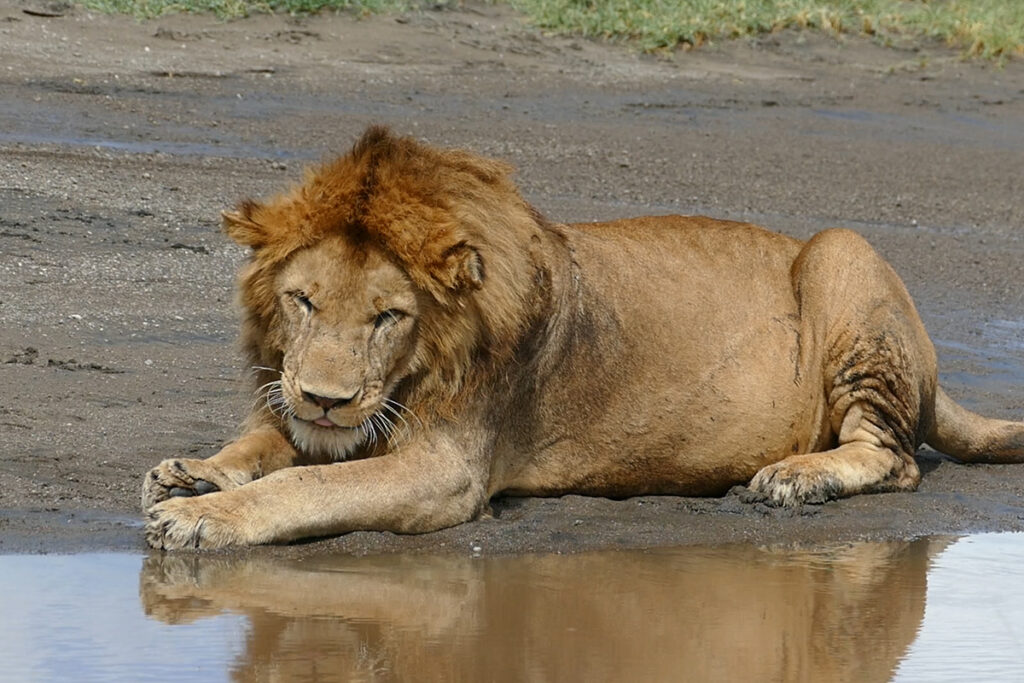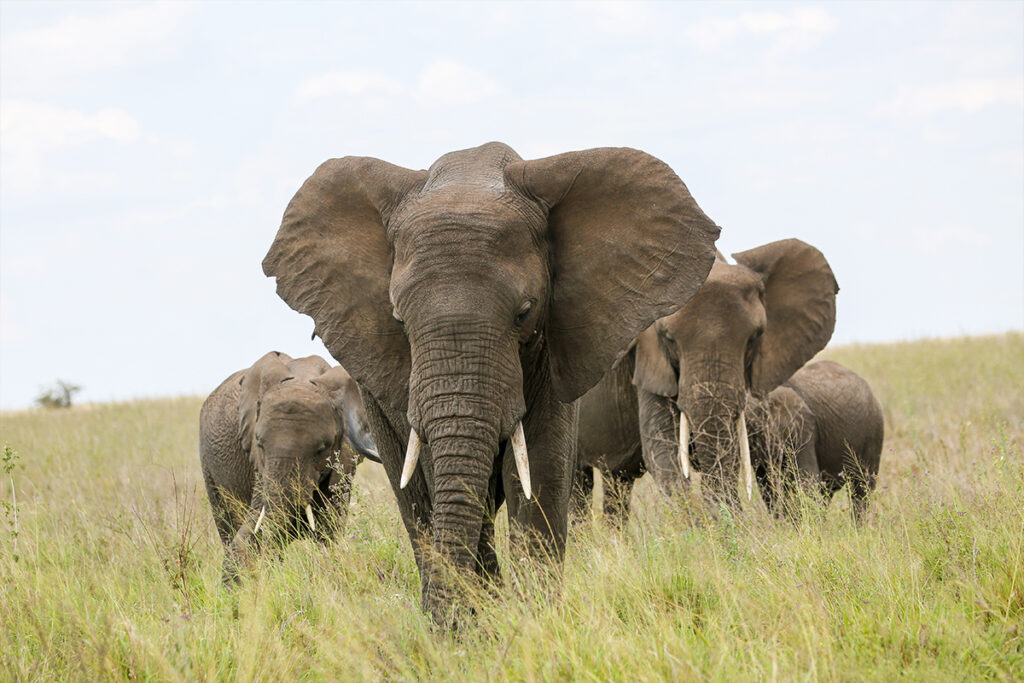Picture yourself standing on the vast plains of the Serengeti, where the Great Migration showcases one of the world’s most spectacular wildlife events. A 5-day Serengeti and Ngorongoro tour not only promises close encounters with Africa’s iconic Big Five but also offers breathtaking views of untouched landscapes. Every step you take here holds a surprise waiting to be discovered.
The Serengeti’s rich history dates back to when early explorers first marveled at its beauty. This region, combined with the unique Ngorongoro Crater, offers visitors a chance to experience diverse ecosystems in a relatively short period. Nearly two million wildebeests, zebras, and gazelles migrate through Serengeti, creating unparalleled opportunities for wildlife observation.

Exploring the Highlights of a 5-Day Serengeti and Ngorongoro Tour
Embarking on a 5-day Serengeti and Ngorongoro tour reveals some of the most awe-inspiring sights in the world. The Serengeti, famous for the Great Migration, is home to millions of wildebeests, zebras, and gazelles. Witnessing this natural spectacle provides a unique opportunity to see the vastness of the animal kingdom. The Ngorongoro Crater, a UNESCO World Heritage Site, is equally mesmerizing with its lush landscapes teeming with wildlife. Here, travelers truly feel surrounded by nature’s grandeur.
Among the highlights is a variety of wildlife experiences. Whether it’s tracking a pride of lions or spotting a solitary cheetah, every moment in the Serengeti and Ngorongoro is filled with excitement. Safari drives, guided by expert rangers, enhance understanding of these complex ecosystems. A typical day also includes learning about the Maasai people who have called these lands home for centuries. Their stories enrich the journey and offer deep cultural insights.
Planning is essential for such an unforgettable adventure. According to here is the article, there are safari packages suited for all budgets, which ensure that everyone can experience this wonder. It’s ideal to visit during the dry season from June to October, when wildlife is easier to spot. With comfortable lodges situated in prime locations, travelers can unwind after exhilarating days of exploration. Preparation just enhances the thrill of this adventure.
Moreover, for those interested in more, Tanzania offers additional experiences beyond safari tours. As detailed in this post, climbing Mount Kilimanjaro is another bucket-list activity. Pairing a safari with a mountain climb elevates the adventure to new heights. Still, the lasting memories from a Serengeti and Ngorongoro tour remain among the top highlights of any Tanzanian visit. It’s a journey that promises endless stories and breathtaking moments.
An Overview of the Itinerary and Key Experiences
Day one kicks off with an exhilarating flight to the Serengeti, setting the stage for an unforgettable adventure. Upon arrival, a welcoming drive to the lodge offers glimpses of the stunning landscape. In the afternoon, a brief game drive introduces you to the abundant wildlife. From lions lounging in the shade to herds of elephants grazing, the Serengeti’s magic unfolds quickly. As evening falls, settle into comfortable lodgings and enjoy a stellar dinner under the African sky.
Days two and three are fully dedicated to exploring the Serengeti. Morning and evening game drives ensure sightings of a variety of animals in their natural habitat. Guides often take you to prime spots for observing the Great Migration, a highlight for any safari enthusiast. In between, there’s time to relax at the lodge, swim in the pool, or simply soak in the surrounding beauty. Evenings often include talks by local experts, enhancing your understanding of the ecosystem.
The fourth day marks the journey to Ngorongoro Crater, a short but scenic drive away. This ancient volcanic caldera is home to a dense population of big game. A guided tour of the crater floor offers a chance to see everything from wildebeests and zebras to the elusive black rhino. Stops at various viewpoints provide breathtaking panoramic views of the crater. The day concludes with a cozy evening at a lodge overlooking the crater’s rim.
The final day includes one last game drive in Ngorongoro followed by a leisurely breakfast. Reflect on the incredible experiences as you prepare for the return journey. It’s a great time to chat with other travelers and share stories of sightings and adventures. Leave with photographs, memories, and perhaps a deeper appreciation of Tanzania’s natural wonders. This tour encapsulates the essence of African wildlife and landscapes in just five days.
Day-by-Day Breakdown of Activities and Safari Drives
On the first day, arrival at the Serengeti airport is followed by a transfer to the lodge. After settling in, a short afternoon game drive introduces you to the park’s diverse wildlife. Expect to see elephants, giraffes, and maybe even a lion lounging in the sun. As the day winds down, enjoy a dinner by the lodge. This evening sets the tone for the adventures ahead.
Day two starts early with a sunrise game drive, offering a chance to see predators in action. The cool mornings are perfect for spotting lions and leopards hunting. After breakfast, another game drive provides more opportunities to see wildlife. The afternoon is free for relaxation or exploring the lodge’s amenities. The day ends with a mesmerizing sunset over the plains.
On the third day, morning and afternoon game drives continue the exploration of the Serengeti. Guides lead you to different areas of the park, increasing the chances of seeing various species. During the day, take breaks at picturesque picnic spots. Return to the lodge in the evening to exchange stories with fellow travelers. The day blends excitement with moments of tranquility.
The fourth day involves a drive to Ngorongoro Crater with a safari stop en route. Arriving at the crater, a descent to the floor begins your exploration. Spotting wildlife here is almost guaranteed, given the crater’s high animal density. After a full day of game drives, head to the lodge situated on the crater’s rim. Relax and savor the scenic views from this unique vantage point.
Wildlife Encounters: What to Expect in Serengeti and Ngorongoro
In the Serengeti, wildlife runs the show, offering visitors thrilling encounters with nature’s giants. From majestic elephants to towering giraffes, there’s always something exciting to see. The Great Migration, one of the world’s most spectacular events, fills the landscape with thundering hooves. Huge herds of wildebeests and zebras traverse the plains in search of greener pastures. It’s an unforgettable experience that captivates the imagination.
Lions, often in pride groups, are common sights in both parks. They are mostly seen lounging in the grass or lazing in the shade, conserving energy for their nighttime hunts. Other top predators include the swift cheetah and sneaky leopards, though they can be a bit elusive. Spotting these majestic cats in action is a heart-pounding thrill. Guides share tips and tricks to increase chances of sightings.
Ngorongoro Crater offers a slightly different ecosystem with unique wildlife. Besides the usual suspects, travelers might see the rare black rhino grazing in the open. Hippos wallow in the swampy areas, while flamingos add a splash of color to the crater’s soda lake. Buffaloes and hyenas are also frequent features of the crater landscape. The diversity here is rich and reassuring.
Birdwatchers will find paradise with over 500 species across these regions. Eagles soar high, scanning the ground for their next meal. Colorful lilac-breasted rollers and oxpeckers are a delight to observe. Keep binoculars close for a chance to spot these vibrant flyers. Each sighting adds to the richness of the safari experience.
Each wildlife encounter contributes to a deeper appreciation for these magnificent creatures and their habitats. Nature’s intricate dance between predator and prey unfolds right in front of you. Seeing animals interact with their environment emphasizes the importance of conservation. Observing from a distance ensures minimal disturbance to their natural routines. It’s a reminder of the wild beauty that thrives on this planet.
Cultural Insights: Meeting the Maasai and Local Communities
Meeting the Maasai tribe offers a vibrant glimpse into their rich cultural heritage. Known for their distinctive attire and jumping dance, the Maasai are one of Africa’s most famous tribes. Visiting a Maasai village reveals their way of life, including traditional homes and cattle herding techniques. Engaging with the Maasai people provides insights into their spiritual beliefs and practices. Their warm hospitality leaves a lasting impression on visitors.
Local markets in the regions near Serengeti and Ngorongoro are bustling with activity. These markets offer a chance to interact with different communities and understand diverse cultural practices. Local craftsmen showcase handmade jewelry, colorful fabrics, and intricate beaded artwork. Each item tells a story of tradition and craftsmanship passed down through generations. Purchasing souvenirs here supports the local economy and preserves traditional arts.
Community-led tourism initiatives in the area aim to promote sustainable travel and cultural preservation. These programs often include guided tours by local residents, ensuring an authentic experience. Activities range from visiting schools and health centers to participating in traditional dance and music performances. This immersive cultural exchange fosters mutual respect and understanding. Travelers gain a deeper appreciation for the everyday lives and challenges of these communities.
Traditional Maasai meals are a highlight of the cultural experience. Visitors may have the opportunity to try dishes made from local ingredients. Popular meals include grilled meats, maize porridge, and fresh vegetables. Sharing food with the Maasai introduces their culinary traditions and the importance of communal dining. It’s a unique way to connect with the culture on a deeper level.
The harmonious coexistence of wildlife and local communities is evident in conservation efforts. The Maasai play a significant role in preserving the natural environment. Their knowledge of the land and its resources is invaluable. Education programs teach young Maasai about sustainable practices that protect both their heritage and the ecosystem. This balance showcases the interconnectedness of their cultural identity and environmental stewardship.
Planning Your Trip: Best Times to Visit and Travel Tips
The ideal time to visit the Serengeti and Ngorongoro is during the dry season, from June to October. During this period, wildlife is easier to spot as animals gather around waterholes and rivers. The Great Migration usually peaks around July and August, offering an unforgettable spectacle. However, visiting during the wet season from November to May has its own perks. Lush landscapes and fewer crowds make it a tranquil experience.
When it comes to packing, prioritize comfort and practicality. Lightweight clothing in neutral colors is advisable to blend in with the surroundings. Don’t forget essentials like sunscreen, a hat, and sturdy walking shoes. Binoculars enhance your wildlife viewing experience. A camera with extra memory cards is a must to capture those once-in-a-lifetime moments.
Booking your safari through reputable tour operators ensures a seamless experience. Researching reviews and comparing packages can help you find great deals. Choose lodges or campsites that adhere to sustainable practices for a more eco-friendly stay. Planning accommodations in advance, especially during peak seasons, is recommended. This approach helps in securing your preferred dates and locations.
Health and safety should be a priority when traveling. Consult with your doctor about necessary vaccinations and malaria precautions. Travel insurance is essential for peace of mind during your trip. Stay informed about the latest travel advisories and entry requirements. Being well-prepared ensures a safe and enjoyable journey.
Transportation within Tanzania is mostly through small charter planes or safari vehicles. Flights between various national parks are convenient and time-saving. Road transfers offer scenic views but can be bumpy. It’s wise to prepare for varied travel conditions. Being flexible with your plans allows for unexpected opportunities and enriching experiences.

Frequently Asked Questions
Explore essential information about the Serengeti and Ngorongoro safaris. These questions highlight what to expect and how to plan your adventure.
1. What is the best time to visit the Serengeti and Ngorongoro?
The best time to visit the Serengeti and Ngorongoro is during the dry season, from June to October. During this period, wildlife is more visible as animals gather around water sources. The Great Migration usually occurs between July and August, providing a spectacular experience for visitors looking for action-packed safaris.
Visiting in the wet season, from November to May, has its own charm, with lush scenery and fewer tourists. However, some roads may become challenging to navigate due to rain. The end of the wet season in March offers excellent opportunities to witness calving, attracting numerous predators to the area. This unique spectacle appeals to wildlife enthusiasts and photographers.
2. How can travelers ensure safety during their safari trips?
Ensuring safety during a safari involves several key steps. First, always follow the guidelines provided by your safari guide. They are trained to handle various situations and know what to expect in the wild. Staying inside the vehicle during game drives is crucial for your protection.
It’s also important to have the necessary vaccinations and travel insurance before starting your journey. Consult your doctor for medical advice related to the areas you are visiting. Carry essential items like sunscreen, insect repellent, and a first aid kit to stay comfortable and safe throughout your adventure.
3. What can travelers expect in terms of accommodations during their safari?
During a Serengeti and Ngorongoro safari, travelers can expect a range of accommodation options. These range from luxurious lodges to more budget-friendly campsites. Lodges often offer amenities such as en-suite bathrooms, gourmet meals, and even swimming pools, providing comfort amidst wilderness.
For a more rustic experience, tented camps provide an authentic feel without sacrificing safety. These camps are often situated in prime wildlife viewing areas, offering closer encounters with nature. Staying in a tented camp can enhance the adventurous aspect of the safari, allowing travelers to immerse themselves fully in the environment.
4. What cultural experiences are available during the trip?
A visit to the Serengeti and Ngorongoro is not just about wildlife; it’s also a chance to connect with the local culture. Meeting the Maasai people is a highlight for many visitors. These interactions typically include village tours, where visitors can learn about Maasai traditions and daily life.
Participating in traditional dance and music events offers a deeper insight into the local culture. Many safaris also include visits to community projects, providing a platform to observe how tourism supports local development. Engaging with the Maasai enriches the travel experience, creating lasting connections and memories.
5. What should travelers pack for a safari in Serengeti and Ngorongoro?
When packing for a Serengeti and Ngorongoro safari, comfort and practicality are essential. Lightweight, breathable clothing in neutral colors is recommended to adapt to the warm days and cooler evenings. Hats, sunglasses, and sunscreen are crucial to protect against the strong sun.
The use of binoculars enhances wildlife viewing, providing closer glimpses of distant animals. Don’t forget a camera to capture stunning landscapes and unforgettable wildlife encounters. Packing a small first aid kit and essential medications ensures any minor health concerns are quickly addressed.



